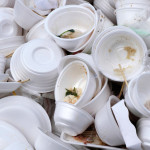You Have Depression . . . Now What?
Until recently, many experts thought that a clinician could pick any antidepressant or type of psychotherapy at random because, with a few clinical exceptions, there was little evidence to favor one treatment over another for a given patient.
Dr. Helen Mayberg, professor of psychiatry at Emory University, has published a study identifying a potential biomarker in the brain that could predict whether a depressed patient would respond better to psychotherapy or antidepressant medication.? Over the course of monitoring subjects, Dr. Mayberg found striking brain differences between patients who did well with a certain medication compared with cognitive behavior therapy, and vice versa. ?Patients who had low activity in a brain region called the anterior insula measured before treatment responded quite well to therapy but poorly to the medication; conversely, those with high activity in this region had an excellent response to the medication, but did poorly with therapy.
Doctors typically prescribe antidepressants on a trial-and-error basis, selecting or adding one antidepressant after another when a patient fails to respond to the first treatment. Rarely does a clinician switch to an empirically proven psychotherapy like cognitive behavior therapy after a patient fails to respond to medication.
This study, published in JAMA Psychiatry, suggests scanning a patient with an M.R.I. or PET to evaluate brain activity and proscribing the appropriate course of action based upon one’s brain “fingerprint.”
Indoor Tanning Not a Fading Fashion
Displeased with pale skin, eager for a quick fix, many, especially teenagers flock to tanning beds dotting strip malls across the country.? It’s cheap and safe . . . right?
A review of scientific evidence published last year estimated that tanning beds account for as many as 400,000 cases of skin cancer in the United States each year, including 6,000 cases of melanoma, the deadliest form.? The incidence rate of melanoma in women under 40 has risen by one-third since the early 90s. ?Experts say the increase is real, and not just a matter of better detection.
Many factors, including genetics, are at play with skin cancer. But exposure to ultraviolet light causes a majority of cases, and scientists have been trying to gauge how big a role indoor tanning plays.
Many young women said in interviews that tanning fed a craving to be pretty, at a time in life when it is most acute.?? One says tanning makes her feel ?more confident and more comfortable when I walk around . . . sometimes it makes me feel thinner.”
The C.D.C.?s national youth survey found that indoor tanning often goes along with binge drinking and unhealthy weight-control practices. Among teenage girls, it was associated with illegal drug use and having sex with four or more partners, and among boys with the use of steroids, daily cigarette smoking and attempted suicide. Boys also tan indoors, but their numbers are a small fraction of the total.
Read more about the studies linking cancer to indoor tanning here.
NYC Bans Foam Packaging
This week, New York officially became the largest city in the U.S. to ban plastic foam, usually known as Styrofoam, joining 70 other cities across the country in an sincere attempt to rid our environment of this polluting scourge.
Former New York Mayor Michael Bloomberg originally?proposed the ban?during a February 2013 State of the City address, but Mayor Bill de Blasio is seeing it through: If all goes as planned, it should roll out on?July 1, preventing?foam cups and containers and even packing peanuts from being sold in the Big Apple.
Sanitation Commissioner Kathryn Garcia reminds us:??Removing polystyrene from our waste stream is not only good for a greener, more sustainable New York,? she?said, ?but also for the communities who are home to landfills receiving the City?s trash.?? Officials say it could eventually remove?30,000 tons of the stuff from streets and landfills and waterways.




Comments are closed.